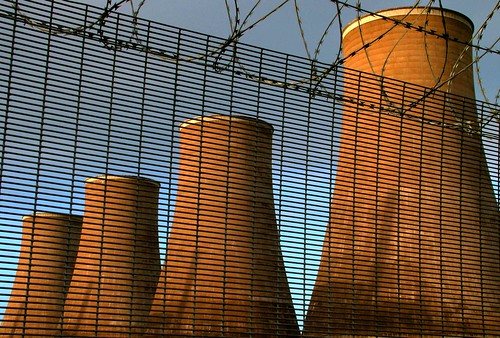
Photo Credit mobileart
I read the International Energy Agency’s latest Energy Technology Perspectives 2008 report and it is sobering stuff.
It starts off by outlining what will happen in a business as usual scenario:
Our current path is not sustainable
If governments around the world continue with policies in place to date – the underlying premise in the ETP Baseline scenario to 2050 – CO2 emissions will rise by 130% and oil demand will rise by 70%. This expansion in oil equals five times today’s production of Saudi Arabia.
What is worse, according to the report, despite recognition of the problem, CO2 emissions have grown considerably in recent years.
Higher oil and gas prices result in a rapid switch to coal. Moreover rapid growth in China and India, both coal-based economies, has also contributed to this deteriorating outlook.
Getting CO2 emissions even back to 2005 levels by 2050 will pose massive challenges –
No single form of energy or technology can provide the full solution. Improving energy efficiency is the first step and is very attractive as it results in immediate cost savings. Significantly reducing emissions from power generation is also a key component of emissions stabilisation. But even this is not enough.
However, getting us to 50% of the 2005 emissions by 2050 means that
Total additional investment needs in technology and deployment between now and 2050 would amount to USD 45 trillion, or 1.1% of average annual global GDP over the period”, Mr. Tanaka stressed.
We would need a virtual decarbonisation of the power sector. Given the growing demand for electricity, this would mean that on average per year 35 coal and 20 gas-fired power plants would have to be fitted with CO2 capture and storage (CCS) technology, between 2010 and 2050 at a cost of USD 1.5 billion each. Furthermore, we would have to build an additional 32 new nuclear plants each year and wind capacity would have to increase by approximately 17.500 turbines each year.
32 new nuclear plants every year between 2010 and 2050? Wow! I wonder if the authors have read the Rocky Mountain Institute report on nuclear energy which says
Construction costs worldwide have risen far faster for nuclear than non-nuclear plants, due not just to sharply higher steel, copper, nickel, and cement prices but also to an atrophied global infrastructure for making, building, managing, and operating reactors. The industry’s flagship Finnish project, led by France’s top builder, after 28 months’ construction had gone at least 24 months behind schedule and $2 billion over budget.
Unless something drastic happens in the next few years we will be lucky if our CO2 emissions in 2050 are not higher than they were in 2005. And that has dire implications for the health of the planet.
